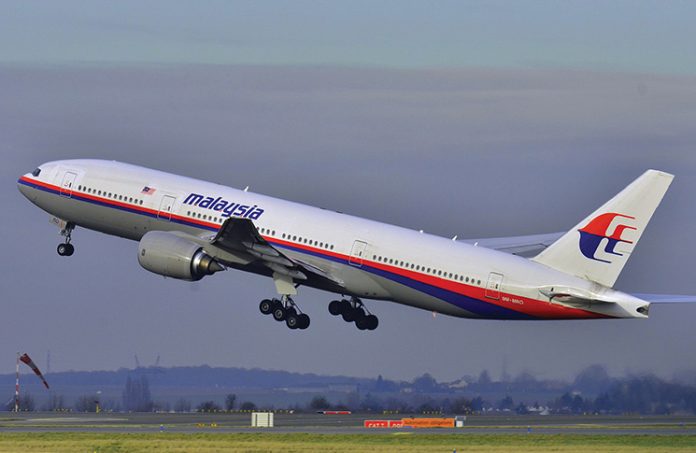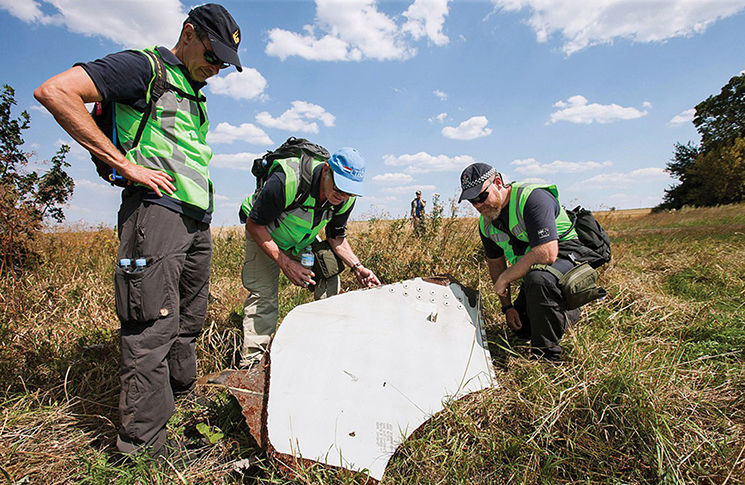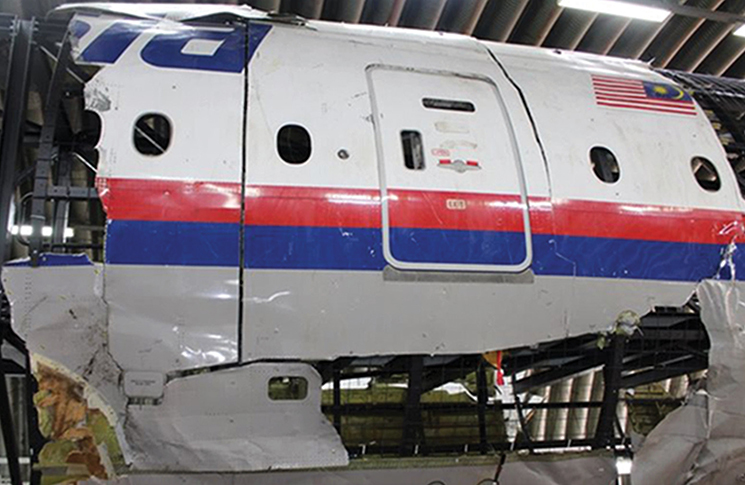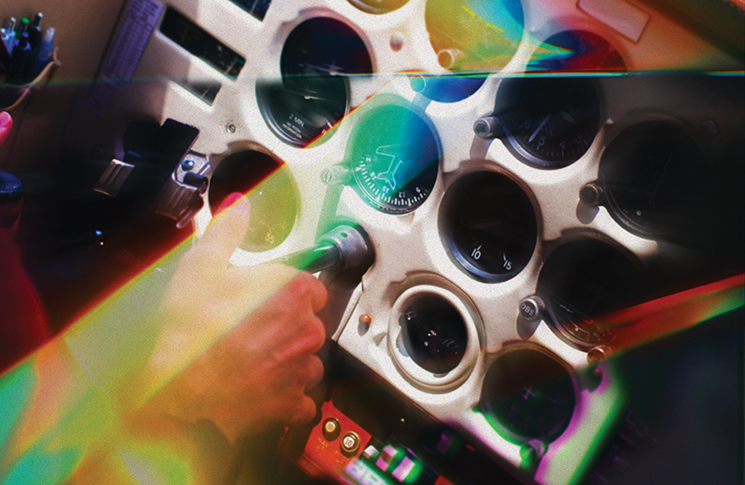
Ten years after 2 appalling aviation disasters, reforms and countermeasures are being put in place.
It’s been more than a decade since 2 air disasters rocked the world in quick succession, generating one of aviation’s great mysteries and posing significant questions about the wisdom of flying over conflict zones.
The baffling disappearance of Malaysia Airlines flight MH370 on what was supposed to be a routine journey between Kuala Lumpur and Beijing on 8 March 2014 left many incredulous that a modern airliner could disappear so effectively.
The shock intensified a few months later when a second Malaysia Airlines Boeing 777 operating between Amsterdam and Kuala Lumpur was brought down over eastern Ukraine by a Russian Buk missile.
Not only did Malaysia’s flag carrier suffer 2 tragedies close together, but the 17 July atrocity involving Flight MH 17 shattered the assumption that a commercial jet in cruise was safe from ‘local’ conflicts tens of thousands of feet below.
Air disasters are rare – the International Air Transport Association (IATA) says 2023 recorded just one accident for every 1.26 million flights – because the aviation industry is willing to learn from misfortune.
The Malaysia Airlines crashes were no different: emerging from the heartache, speculation and political denials came reforms designed to make aviation safer, although some have taken longer than expected.
In the case of MH370, the stage had already been set 5 years earlier with the loss of Air France flight 447.
Into dark waters
AF447 was en route from Rio de Janeiro to Paris on 1 June 2009 when it plunged into the Atlantic Ocean due to likely icing of the Airbus A330’s pitot tubes and pilot error that put it into a stall.
The aircraft’s communications addressing and reporting system (ACARS) transmitted position and maintenance reports prior to its disappearance and potential wreckage was spotted by searchers the next day.
Two bodies, a seat and a nylon backpack were recovered on 6 June, increasing to 50 bodies over a wide area by 16 June. The aircraft’s vertical stabiliser was also found.
Despite this, the aircraft’s ‘black boxes’, sitting at a depth of 4,000 metres, were not found until May 2011.
Although French investigators recommended the transmission window for underwater locator beacons attached to the flight data and cockpit voice recorders be extended from 30 days to 90 days to improve the chance of finding them, that had not happened by the time MH370 disappeared in 2014.
In the case of MH370, what is widely thought to be human involvement meant the transponder and ACARs had been disabled long before it crashed in the Southern Indian Ocean. This meant searchers did not know where that aircraft, with 227 passengers and 12 crew, had crashed or even which way it had travelled after it went ‘dark’.
It was only ‘handshakes’ between a satellite and a still active system designed to transmit telephony and aircraft data that allowed a search team led by the Australian Transport Safety Bureau to define potential crash sites in the Southern Indian Ocean, but the resulting search was unsuccessful.
The discovery of washed-up wreckage and the use of drift analyses by universities and institutions such as the CSIRO produced further refinements in the probable search area, but a second sweep involving sophisticated underwater drones and private company Ocean Infinity also failed to find the wreckage.

Surveillance stepped up
Meanwhile, the aviation industry and the International Civil Aviation Organization (ICAO) were looking at ways to make it easier to track the position of aircraft, including suggestions by Malaysia that it should be in real time.
The result was the Global Aeronautical Distress and Safety System and a worldwide mandate requiring all new commercial aircraft weighing more than 27 tonnes to have new capabilities including autonomous distress tracking (ADT) and measures for locating aircraft wreckage.
ADT requires an aircraft to report its position every 15 minutes during normal flight, something already adopted by many airlines, and sharply reduce the intervals – to once a minute – if an aircraft is compromised.
The COVID-19 pandemic and delivery doubts from original equipment manufacturers slowed the mandated adoption of ADT and extended the deadline to 1 January 2025.
ADT requires an aircraft to report its position every 15 minutes during normal flight.
This would apply to newly delivered aircraft which have their first Certificate of Airworthiness issued on or after 1 January this year.
European manufacturer Airbus is already introducing an emergency locator transmitter device with ADT (ELT-DT) to its airliners that would broadcast the aircraft’s final impact location at sea, as well as its 3-D position in the events leading up to it.
Airbus executive expert of communication, navigation and surveillance Claude Pichavant says the company has been working since AF447 and MH370 with ICAO, the European Union Aviation Safety Agency (EASA) and various technical bodies on a two-phase system developed with Safran Electronics and Defense beacons.
‘The one-minute interval is equivalent to a six-nautical-mile radius from the impact site or research area,’ Pichavant said.
‘This was debated during discussions with ICAO on the standardisation and mandates.
‘Using data from more than 50 incidents from the French accident investigation board, the Bureau d’Enquêtes et d’Analyses, it was agreed that the one-minute requirement is sufficient.’
Another big difference of the ELT-DT is it is autonomous and powered by its own battery. This means that once triggered, it cannot be switched off.
A GPS receiver allows it to broadcast an aircraft’s real-time position independently of the aircraft’s navigation system when it fails to communicate with the rest of the aeroplane.
Airbus started introducing the new system in its A330neos in April 2023 and followed with the A350, A330 and A220 families.
The equipment comes as standard in the A350s and A330s but is a customer option on the single-aisle aircraft depending on their planned use. As of mid-February 2024, about 110 Airbus aircraft had been delivered with the technology.
Boeing is also testing a system that meets this requirement under the oversight of global regulators.
‘We have developed a GADSS and performed flight and ground testing on our current airplane models,’ the company told Flight Safety Australia. ‘We are in the process of completing required engineering activities with the regulators to certify an in-line production and retrofit solution.’
While new aircraft will come with ADT, IATA says there is no mandatory retrofit of the legacy fleet.
Still, the airline association points to other improvements in the last 10 years, particularly with newer aircraft such as the Boeing 787, the A350 and single-aisle variants such as the A320neo and B737 MAX families.
This includes mandates in various regions that new aircraft be fitted with satellite-based ADS-B Out systems – which provide information such as position, altitude and speed – as standard.
Locating for longer
Another improvement to stem from the AF447 and MH370 crashes was the upgrading of underwater locating devices (ULDs), commonly known as ‘pingers’.
Pingers are attached to the containers of flight data and cockpit voice recorders and automatically activate in contact with water. They transmit a signal that can help a search and rescue team find submerged wreckage.
The devices were previously required to stay active for 30 days but this was extended to 90 days because of the number of extended searches for aircraft that crashed in water, including MH370 and AF447.
Aircraft with maximum take-off weight of more than 27,000 kg that operate long-range, overwater flights are also required to have an ULD in the hull – but not the wings or empennage – that operates on a separate frequency.
IATA is unable to say how many aircraft in the international fleet are fitted with these devices but notes the issue is covered by ICAO standards and recommended practices (SARPs) that have applied from January 2018. It says this means the issue should have been addressed by member states in their jurisdictions.
Drones on the case
A third area to see improvement, although not confined to aviation, is the technology used to find aircraft.
The initial search for MH370 used deep tow vehicle sonar systems, towed on a line behind a ship, and a single autonomous underwater vehicle (AUV) per ship, but a 2018 sweep was able to use 8 AUVs from a single ship, capable of diving to depths of 5,800 metres using sophisticated sensors.
This greatly reduced the time needed for the second search, although that operation also failed to find the missing B777, and the technology has since advanced.
The threat from below
The wreckage of MH17 strewn across the eastern Ukraine countryside needed no search and generated a different debate.
A forensic probe by a resolute team of Dutch-led international investigators discovered the aeroplane had been hit by a Buk missile transported from a base in the Russian Federation and launched by Russian-controlled Ukrainian separatist forces.
With 298 people killed, this was the deadliest incident involving the shooting down of an airliner; the fact it was hit while the Boeing 777-200ER was in cruise at 33,000 feet sparked a debate about the risks of flying over conflict zones.
Risky Ukrainian airspace had already been placed off limits to US carriers by the Federal Aviation Administration but it was still used daily by multiple aircraft from other countries. There were several in the area, including a Singapore Airlines flight, when MH17 was shot down.
The Dutch Safety Board made 11 recommendations on better managing the risks of flying over conflict zones as part of its investigation into MH17 and reviewed the responses in a 2019 report.
It found the tragedy prompted ICAO to introduce several initiatives aimed at better managing the risks of flying over conflict zones, including amendments to standards, recommended practices and manuals.
Another improvement to stem from the AF447 and MH370 crashes was the upgrading of underwater locating devices (ULDs), commonly known as ‘pingers’.
The changes included guidelines for performing risk assessments and moves to embed and improve information sharing.
The report noted EASA and several ICAO member states had also moved to better manage the risks associated with flying over conflict zones with initiatives such as EASA’s Conflict Zone Information Bulletin.
And airlines were playing a more active role in gathering information about conflict zone risks than they did at the time of the crash of MH17.
‘They also have access to more and generally better threat information,’ the report said.
‘Risk assessments are performed in a more structured manner and some airlines explicitly state that they take uncertainties and risk increasing factors into consideration as part of the risk assessment process.
‘Furthermore, there is evidence to suggest that, if there are doubts about the safety of a flight route, airlines are more inclined not to fly.’
The report also recognised IATA’s efforts to address the conflict zone issue through prescribed management systems and the internationally recognised IATA Operational Safety Audit (IOSA).

Protocols and partnerships
The airline association says it also continues to facilitate information sharing and leverages strategic partners who specialise in geopolitical and security risk analysis.
‘A significant amount of work has been done by IATA and member airlines in terms of strengthening information sharing protocols and systems risk management maturity,’ an IATA spokesperson said.
‘The advancement of open-source information technology coupled with higher and/or ICAO-aligned IOSA standards in risk management have propelled this forward.
‘In addition, IATA annually updates its own security management manual with relevant case studies and industry experience.’
While there were suggestions there should be changes to international law to require countries involved in international airspace to close their airspace, this has not happened and closures are still the responsibility of individual jurisdictions.
But IATA believes the Chicago Convention SARPs ‘clearly and adequately’ outline the obligation of States to protect citizens from acts such as terrorism and military actions in their territory.
Meanwhile, the work to prevent another tragedy like MH17 continues. ‘We maintain a continuous improvement mantra in the adoption of risk management methodologies and best practice,’ the IATA spokesman said.




